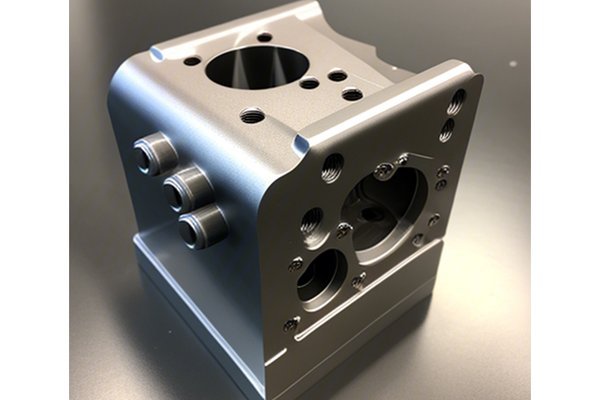Did you know that the automotive industry is responsible for approximately 3% of the global GDP? As one of the most dynamic sectors, it relies heavily on cutting-edge manufacturing technologies to maintain its competitive edge. Among these technologies, Computer Numerical Control (CNC) machining stands out, owing to its ability to produce complex components with high accuracy and reliability.
For automotive manufacturers, achieving precision and quality is essential not only for meeting regulatory standards but also for ensuring performance and safety. In this blog, we’ll explore how CNC machining meets these stringent requirements and delve into the various techniques, technologies, and best practices that can help manufacturers deliver superior automotive parts.
The Importance of Precision and Quality in Automotive Manufacturing
Before we dive into the solutions presented by CNC machining, it’s vital to understand the critical role precision and quality play in automotive manufacturing. The performance, safety, and sustainability of vehicles depend heavily on high-quality components. Flawed parts can lead to severe consequences, including vehicle recalls, increased insurance claims, and, in worst-case scenarios, accidents caused by component failure.
The Role of CNC Machining in the Automotive Industry
CNC machining has emerged as a go-to solution in the automotive sector. By converting computer-aided design (CAD) into precise mechanical movements, CNC machines can produce components with remarkable accuracy. Key automotive applications of CNC machining include:
With the complex geometries and material specifications in automotive components, CNC machining allows manufacturers to meet the tight tolerances required in production.
Understanding the CNC Machining Process
CNC machining comprises several steps, each of which contributes to the precision and quality of the final product. The typical CNC machining process includes:
Techniques for Achieving Precision and Quality
Automotive manufacturers can employ several techniques through CNC machining to ensure high levels of precision and quality:
CNC machining enables the production of parts with tolerances as tight as ±0.005 mm. By using precision tools and advanced programming techniques, manufacturers can ensure that every part fits perfectly and functions as intended.
Choosing the right tools is critical in CNC machining. Factors such as the type of material, the complexity of the design, and the required finish influence tool selection. For example, carbide tools are commonly used for machining hard metals, while high-speed steel tools may be adequate for softer materials.
Optimizing cutting parameters—including feed rate, spindle speed, and depth of cut—ensures that the machining process is efficient while minimizing wear on the tools and the workpiece. Understanding the material characteristics is essential to making these adjustments.
Achieving the required surface finish is crucial for automotive components. Techniques such as fine machining, polishing, and applying coatings can enhance the surface quality, reduce friction, and improve the lifespan of parts.
Implementing stringent quality assurance protocols, such as First Article Inspection (FAI) and regular audits, helps ensure that all components meet specified standards. Employing techniques such as Coordinate Measuring Machines (CMM) allows for precise measurement and verification against CAD specifications.
The Impact of Technology on CNC Machining Quality
Technological advancements play a significant role in enhancing CNC machining processes. Here are some significant innovations that have reshaped how automotive manufacturers approach precision and quality:

The integration of Computer-Aided Design (CAD) and Computer-Aided Manufacturing (CAM) systems provides an efficient workflow from design to production. With real-time feedback and simulation capabilities, manufacturers can anticipate machining issues and optimize designs before production.
Modern CNC machines can operate on multiple axes. Multi-axis machining allows for more complex geometries and minimizes the need for multiple setups, reducing the potential for errors while improving overall efficiency.
The use of automation and robotics in CNC machining has significantly enhanced production capabilities. Automated loading and unloading reduce human error, while robotic arms can perform repetitive machining tasks with incredible speed and accuracy.
The Internet of Things (IoT) has introduced a new era of smart manufacturing. Sensors embedded in CNC machines relay performance metrics, allowing operators to monitor conditions in real-time and make data-driven adjustments to maintain precision and quality.
Case Studies: Successful Implementation of CNC Machining in the Automotive Sector
To better understand the effectiveness of CNC machining in the automotive sector, let’s examine a few case studies showcasing best practices and remarkable results.
Case Study 1: Improving Component Accuracy at a Transmission Manufacturer
A leading transmission manufacturer faced challenges in maintaining tolerances in their components due to variances in machining processes. By investing in multi-axis CNC machines and implementing rigorous quality control protocols, the company saw a 30% reduction in tolerance deviations, resulting in fewer reworks and improved overall efficiency.
Case Study 2: Enhanced Surface Finish for Engine Components
Another automotive manufacturer struggled with surface roughness on their engine components, impacting performance. By switching to precision grinding and advanced finishing techniques, they enhanced surface quality, which not only improved part performance but also reduced wear and extended the components’ lifespan.
Case Study 3: Customer Satisfaction through Consistent Quality
A provider of custom machined parts for the automotive sector utilized CNC machining to produce high-precision components consistently. By adopting a smart manufacturing approach, they were able to ensure quality and reliability, leading to a 40% increase in customer satisfaction ratings.
Challenges in Meeting Precision and Quality Requirements
While CNC machining offers numerous advantages, there are challenges that manufacturers must navigate to ensure precision and quality in their automotive components:
Variability in raw materials can lead to inconsistencies in the machining process. To combat this, sourcing high-quality materials and conducting regular inspections can help maintain performance.
The workforce in CNC machining requires specialized training to handle advanced technologies effectively. Investing in employee training and development is crucial for implementing best practices that uphold precision and quality.
Regular maintenance of CNC machines is critical for ensuring accuracy and quality. Neglecting maintenance can lead to machine wear, impacting precision and the quality of the finished product.
Best Practices for Automotive Manufacturers
To ensure the highest levels of precision and quality in automotive CNC machining, manufacturers can adopt the following best practices:
CNC machining is a cornerstone of the automotive industry, ensuring that manufacturers can meet the precise and high-quality standards expected by consumers and regulatory bodies. By leveraging advanced technology, implementing best practices, and continually investing in training and infrastructure, automotive manufacturers can sustain a competitive edge in a rapidly evolving market.
In summary, successful CNC machining in the automotive sector hinges on achieving tight tolerances, optimal cutting parameters, and thorough quality assurance. As the industry moves toward more complex designs and materials, the importance of precision and quality will remain paramount.
As we venture further into an era defined by innovation and growth, it’s essential for stakeholders in the automotive manufacturing landscape to consider how CNC machining will shape the future of their operations. By prioritizing precision and quality, they can build vehicles that ensure safety, performance, and sustainability for generations to come.






